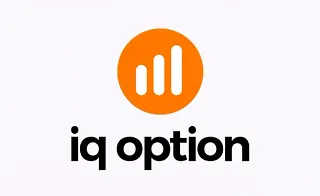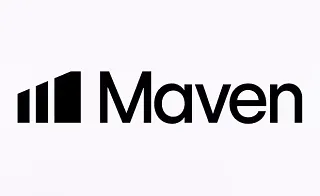To design an entry model using ICT concepts, the primary focus is on shorter timeframes and entry tools, including Fair Value Gap (FVG), Order Blocks, Balance Price Range (BPR), and Optimal Trade Entry (OTE).
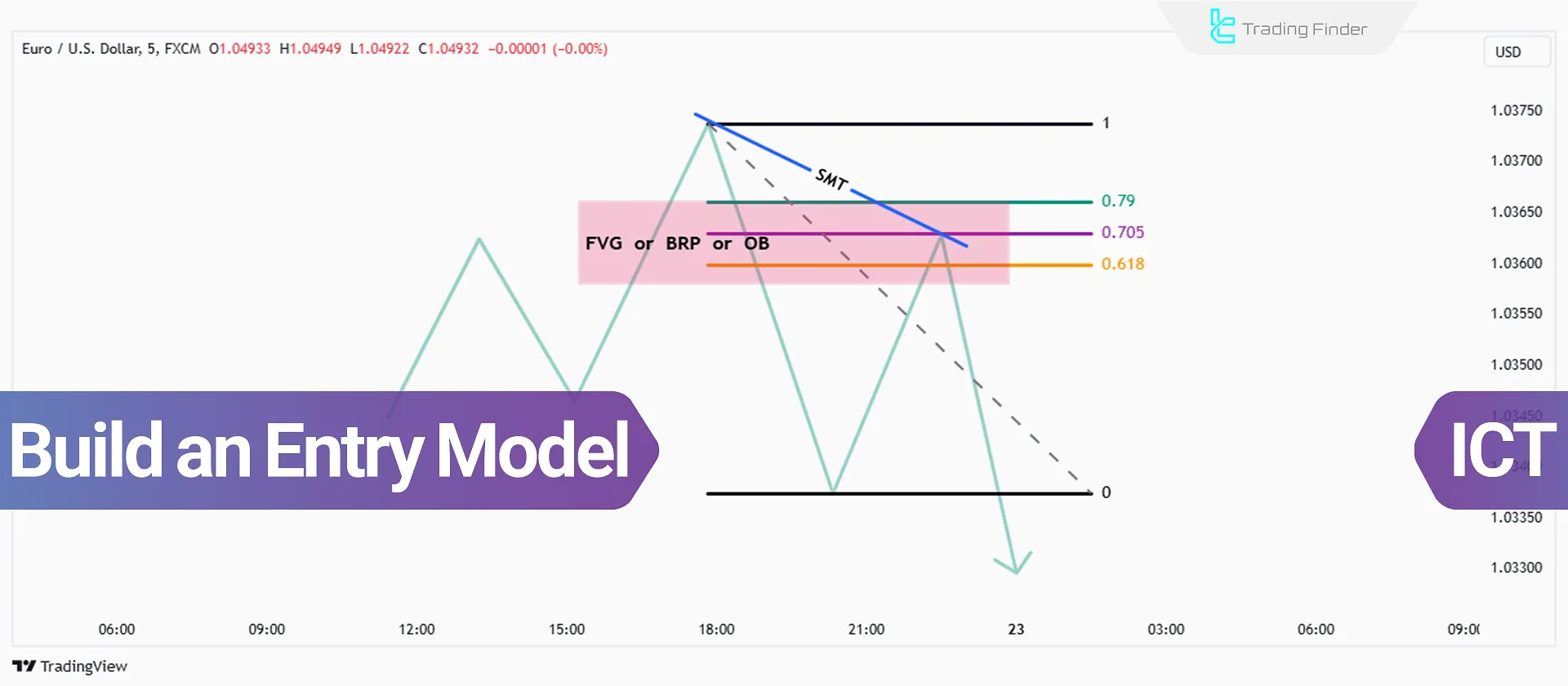
Guide to Building an Entry Model
Several aspects must be considered when designing an entry model using ICT methodology, as outlined below:
Selecting the Entry Timeframe
The first step in constructing an ICT-based entry model is defining the timeframe, which varies according to each trader’s style.
Some traders opt for higher timeframes, such as 15 minutes, while others prefer lower timeframes, including 1 minute or even 15 seconds.
Note: The following explanations will use 5-minute and 1-minute timeframes, as they provide more flexibility for short-term trades.
Choosing the Right Kill Zone
Forex kill zones are specific times of the day with high market liquidity. For example, the New York Open is a prime time for searching for trade entry opportunities due to its high volatility and liquidity.
Key Concepts for an ICT-Based Entry Model
The following concepts are essential for constructing an entry model:
- Displacement: Strong directional price movements consisting of multiple large-bodied candles
- Fair Value Gap (FVG): Price imbalance indicating areas of inefficiency
- Order Block: Institutions and large investors buy or sell orders
- Balance Price Range (BPR): Overlapping areas of two Fair Value Gaps (FVGs)
- Optimal Trade Entry (OTE): Fibonacci-based setup to identify key price reversal levels
- Internal Range Liquidity (IRL): Liquidity pools within a price range (formed by FVGs)
These concepts form the foundation for developing an ICT entry model.
Types of ICT Entry Models
ICT-based entry models are typically constructed by combining multiple concepts. The following sections discuss different ICT entry models.
Entry Based on Fair Value Gap (FVG)
The FVG-based entry model consists of three steps:
- Liquidity Grab: Liquidity is collected from a key range, leading to a price reversal;
- Displacement: After liquidity grab, the price makes an Displacement move in the opposite direction, resulting in a Break of Structure (BOS);
- Return to Fair Value Gap: Following BOS, price retraces to the Fair Value Gap, creating an entry opportunity.
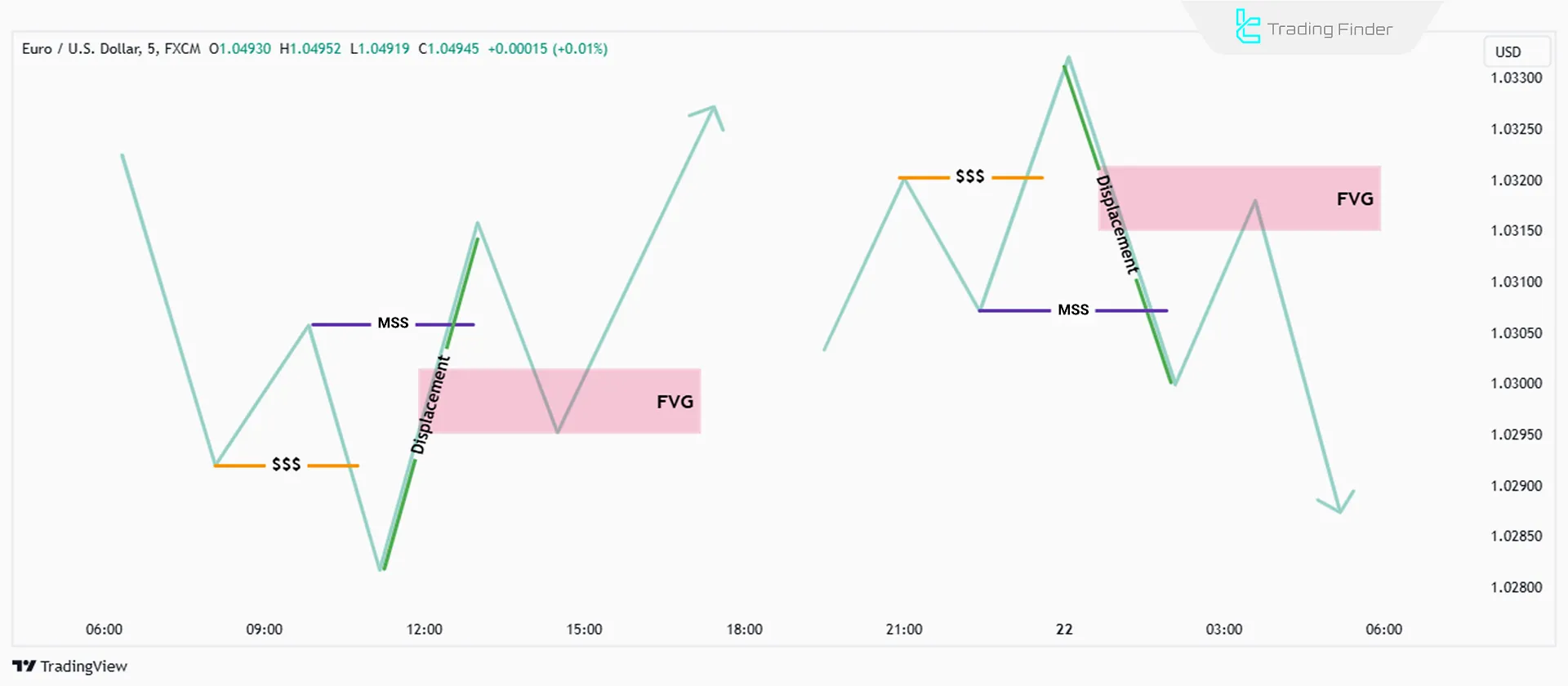
Entry Based on Internal Range Liquidity (IRL)
The IRL-based entry model is summarized in three steps:
- Internal Liquidity Grab: Price moves towards Internal Range Liquidity (IRL), often with a brief counter-trend move;
- Displacement: After collecting internal liquidity, the price makes an aggressive move in the main trend direction, causing a Break of Structure (BOS);
- Next Target: Price moves towards External Range Liquidity (ERL) after absorbing internal liquidity.
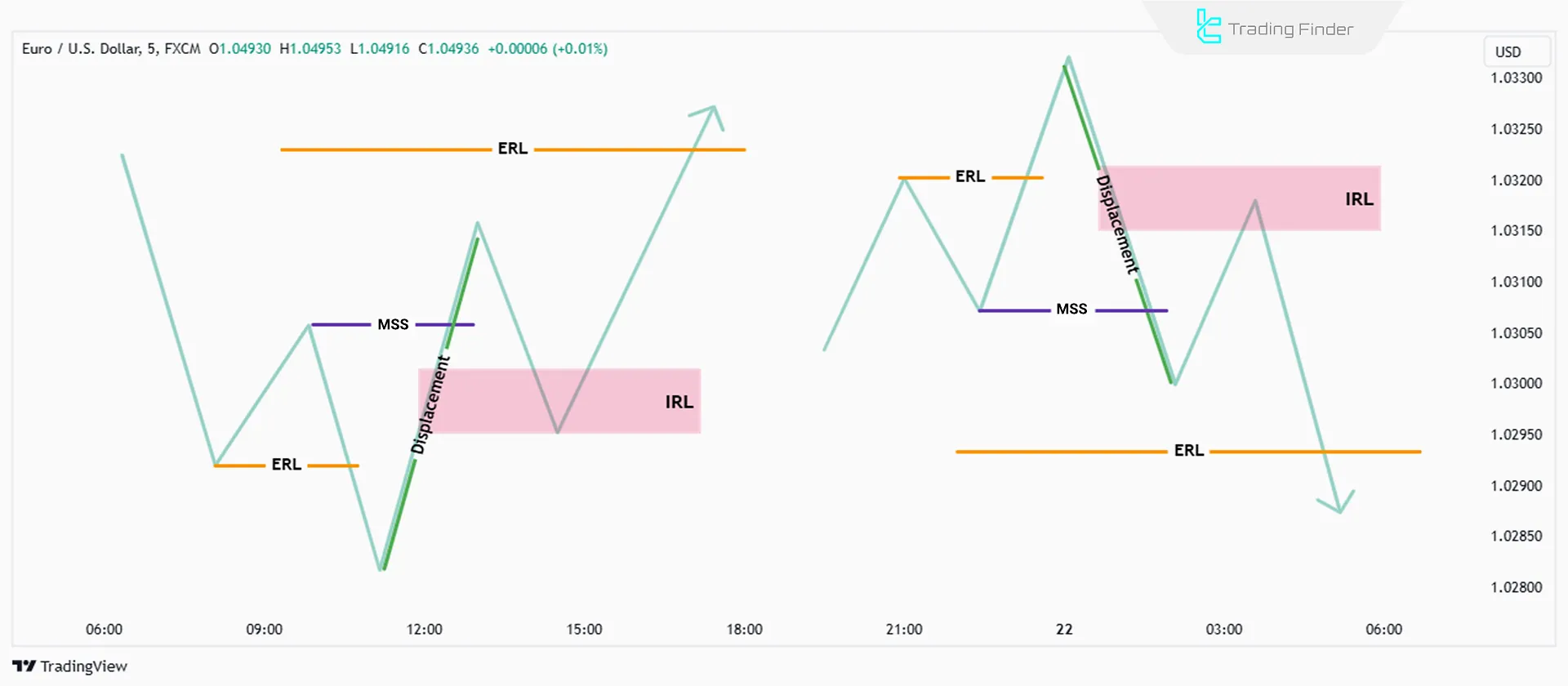
Entry Based on FVG Within OTE Setup
The model is a variation of the first one, but the Fair Value Gap occurs within OTE levels. The steps are:
- Liquidity Grab: Liquidity is absorbed from a key area, followed by a rapid price reversal;
- Displacement: A strong move against the prior trend leads to a Break of Structure (BOS);
- Return to FVG: Price retraces to the Fair Value Gap after BOS;
- Additional Condition: The Fair Value Gap must lie within OTE retracement levels (0.62 to 0.79) to improve the risk-to-reward ratio.
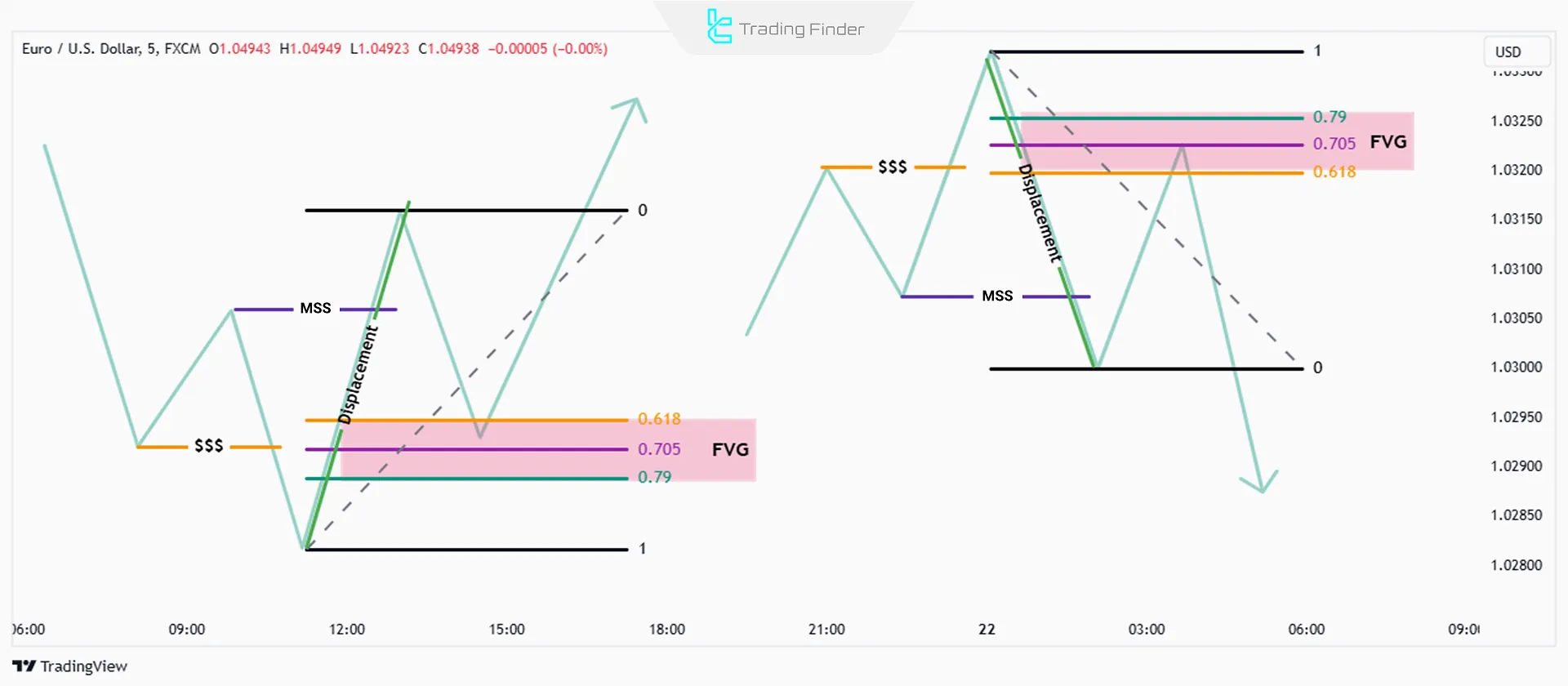
Internal Liquidity with OTE Levels
The Internal Liquidity with OTE model is a combination of the second and third models, where internal liquidity is collected, and the Fair Value Gap lies within OTE levels.
- Internal Liquidity Grab: Price first moves to collect internal liquidity;
- Displacement: A strong price move creates a Break of Structure (BOS);
- Return to FVG in OTE Zone: Entry occurs when the price retraces to an FVG within OTE levels (0.62-0.79) after BOS.
Entry Based on Balance Price Range (BPR)
The Balance Price Range (BPR) model is designed based on the overlap of aggressive moves and Fair Value Gaps in both directions (like a rapid up-and-down move). The steps are:
- Aggressive Buy & Sell Moves: A sharp two-sided move creates overlapping Fair Value Gaps;
- Identifying the Balance Zone: The overlapping FVGs define an entry point;
- Entry & Risk Management: Entry occurs at the balance zone, with stop-loss and Take Profit above the highs or below the lows of the aggressive moves;
- Combining with Other Concepts: This model can be combined with OTE levels, discount zones, or premium zones for better risk-to-reward ratios.
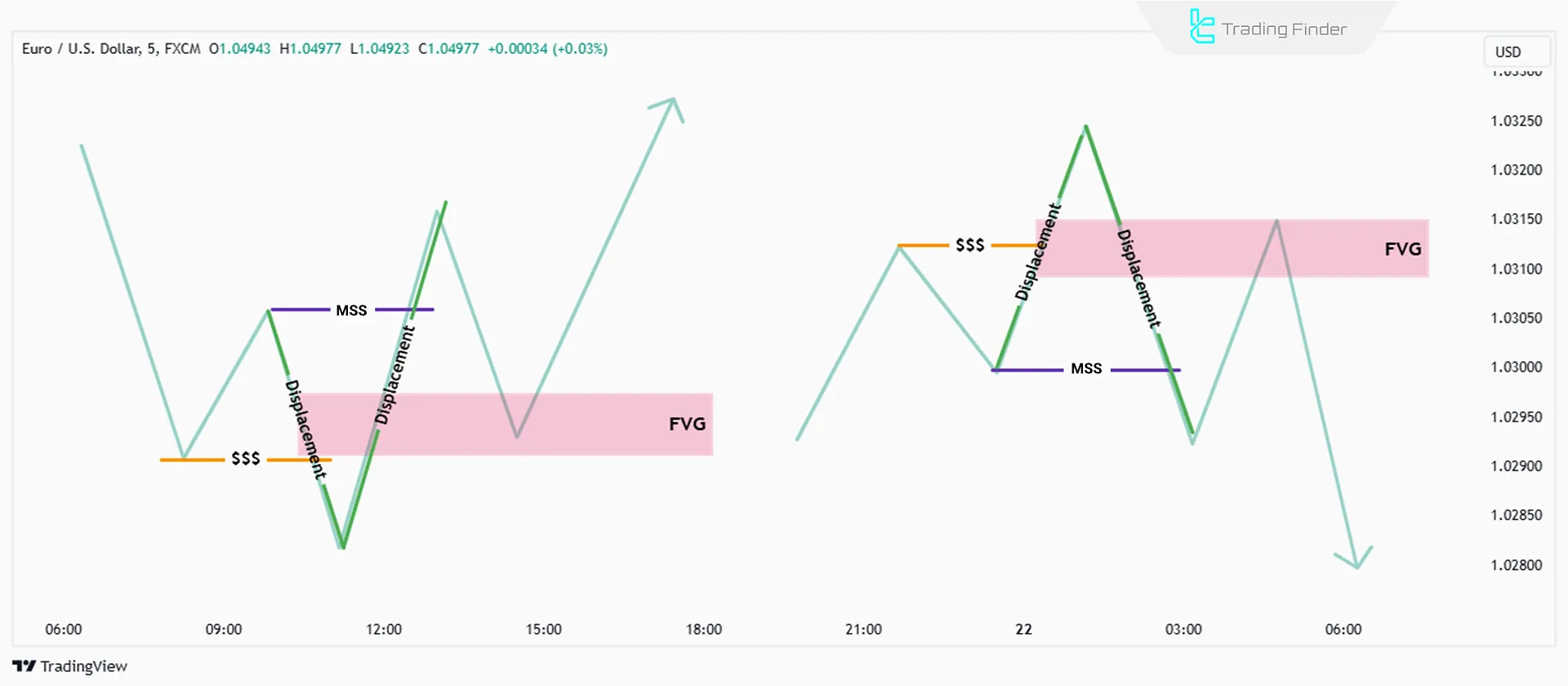
Key Considerations in Combining Techniques for a Custom Model
One advantage of ICT trading is its flexibility in combining different concepts. Traders can integrate elements such as Fair Value Gaps, Order Blocks, Balance Price Range, and Internal Liquidity based on their preferences. Key points include:
- Defining Precise Entry Criteria: Each model should have specific conditions for identifying entry points;
- Considering Risk-to-Reward Ratio: Using concepts like OTE levels can optimize this ratio;
- Testing Models in Various Market Conditions: Each model should be tested in different market conditions (bullish, bearish, and ranging) to ensure effectiveness.
Conclusion
When identifying an ICT-based entry model, combining concepts like FVG, OB, Balance Price Range, and OTE setups provides a structured approach to trade entries.
Analyzing appropriate timeframes, recognizing high-liquidity kill zones, and focusing on key market levels are crucial steps.
